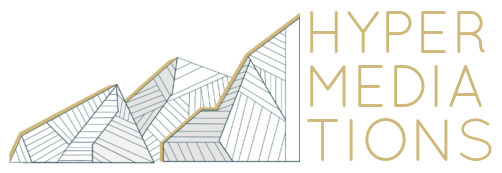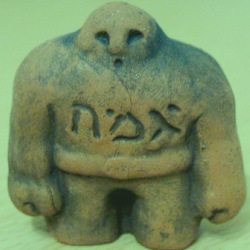For nearly two decades, the Golem of Prague has stood on my desk, watching over every word I write. A souvenir knick-knack depiction of Jewish folklore’s most famous monster, it was a gift from a friend who had recently returned from vacation in the Czech Republic, sometime around the end of the last millennium. These days I talk with that friend maybe once a year; the golem meanwhile makes its presence known daily.
This object is on my mind at the moment not just because we are soon to meet in Prague, but also because I’ve realized with some surprise that it is has resonance with the project I’ve undertaken as part of the working group.
As some may recall, my project is the curation of an exhibit on intersections of religion, science, and technology. There will likely be no golems as such on display, but it occurs to me that, if I do my job well, many of the objects included may have something in common with it. In fact, a certain measure of golemness might be a characteristic that determines whether or not this or that object makes the cut.
According to the legend of the Golem of Prague’s creation, late in the sixteenth century, at a time when the Jews of Bohemia lived under constant threat of anti-Semitic attacks, Rabbi Judah Loew ben Bezalel gathered together a mound of clay from the banks of the river Vltava, molded it into a humanoid form, and then brought it to life to serve as protector of his community. All that had been required to accomplish this miracle was the insertion of three Hebrew letters – aleph, mem, tav; spelling emet or “truth” – into the sculpted mud. In some versions of the tale this was accomplished with a slip of paper; in others the word was inscribed directly onto the giant’s earthy skin.
For a time the golem was a stalwart defender of Prague’s Jewish ghetto, but soon the rabbi’s monster ran amok. The golem rampaged through the city, and could only be stopped when the life-giving letter aleph was removed, changing the word emet to met, literally transforming “truth” to “death.” The darkest renditions of the legend have the golem return to clay and topple in boulder-sized chunks onto the rabbi, killing both the creature and its creator.
The story of the Golem of Prague has long intrigued me as a fantasy of power that is also a parable about the risks of vengeance. It is the creative expression of a persecuted people aware that violence can beget only more violence in the end.
Yet considered in light of my current project, I wonder if the golem might also present a way of thinking about how material culture might illustrate the intersecting categories of religion, science, and technology in history and today. Though its setting is far removed from the American context my exhibit will explore, its themes are nonetheless helpful for thinking of the kinds of objects that will be most effective to include. Moreover, beyond its relevance for the work of building a compelling exhibition, the golem story may also be useful to our broader discussion of publics, and the risks inherent to sending one’s work into the world.
To begin with, the tale of the golem is obviously a story about religion: The word golem itself is Hebrew for an imperfect mass or “unformed body” as described in Psalm 139: “Your eyes saw my unformed body; all the days ordained for me were written in your book before one of them came to be.” The use of biblical language to give this unformed mass life likewise grounds the narrative deeply within scriptural tradition.
Yet might the golem also tell a story about science? Perhaps not science as the word is now used, but it’s no stretch to think of Rabbi Judah as something close to an early modern naturalist, inspecting the qualities of the riverside mud and finding in it the properties necessary to support life.
Seen in a different way again, the golem legend also can be read as a myth concerning technology and its unavoidable dangers. It is a cautionary tale about applications of knowledge outstripping human capacity to control their implications or outcomes.
That the mass-produced golem figurine on my desk, and ancient story it represents, might be seen through all these lenses (and surely many more besides) presents me with a challenge to work toward an exhibition that includes only objects that each similarly lend themselves to multiple avenues of interpretation. If the goal is to explore intersections of religion, science, and technology in surprising and revealing ways, an exhibition full of golems, of a sort, would be hard to beat.
Yet I undertake this challenge with an awareness born of another way of considering the golem. As mentioned, the story of the Rabbi Loew’s creation might also be understood as concerning publics and publication: how written words when distributed through media (whether print, digital, exhibit labels, or vivified river clay) inevitably take on a life of their own. Such words often far surpass the intentions of their author, even at times subverting them. It is a reminder of the limits of a writer’s or a scholar’s ability to control how any given work will be received, and what its ultimate effects will be.
The friend who gave my little golem all those years ago did so because I was at the time a student not just of Jewish folklore but of Yiddish literature, where the legend first came to life. As it happens, there is a Yiddish saying about the golem that also has to do with the public: Der oylem iz a goylem. “The world is a golem.”
When used in a theatrical setting, this expression was a complaint suggesting “The audience is monstrous.” Other times, its meaning was closer to a warning about the uncontrollability of crowds. Often it meant simply, “People are fools.”
Yet one might recognize the truth of this aphorism while still giving the public its due respect. If it the world is in fact a golem, it may be because it is always still in the process of being formed.

